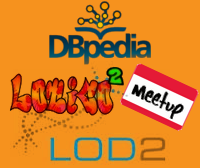
Opening-Keynote
10 Years of Achievement
Phil Archer
joined the W3C staff in February 2009 after many years representing one of its member organisations. Chair of the POWDER Working Group, whose standards form part of the Semantic Web technology suite, he was also an original member of the Mobile Web Best Practices Working Group. In 2010 he switched focus to eGovernment and open data, in particular on improving interoperability between data sets. In December 2013 he became Data Activity Lead, coordinating W3C's work in the Semantic Web and related technologies.
Opening-Keynote Sept. 4, 2014
10 Years of Achievement
A suite of specifications reached W3C Recommendation status in February this year. As well as updating the 2004 specifications they included – at last – formal standards for Turtle, N-triples, N-Quads and TriG. Work on JSON-LD had been completed a month earlier. None of this would have happened without groups of experts dedicating substantial amounts of time to achieve it. What they brought to the table was huge experience of working with Semantic technologies including many notable successes.
It's sometimes said that the Semantic Web has failed. Let's put that nonsense to bed and look at 10 years of success and achievement, recognising where things could have been done better, and look at how the core ideas of URIs as identifiers and describing the world in graphs are finding relevance in large scale and critical systems.
Links



